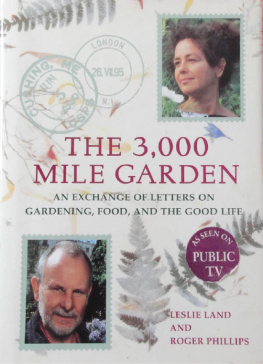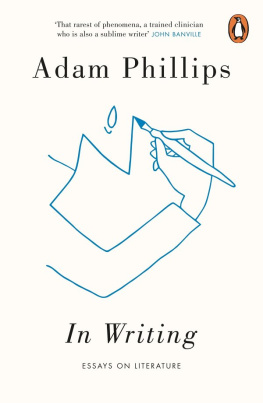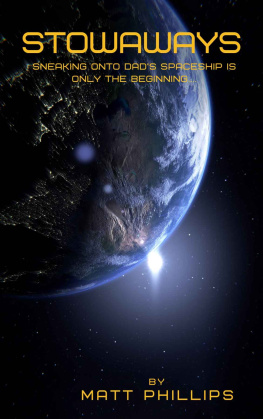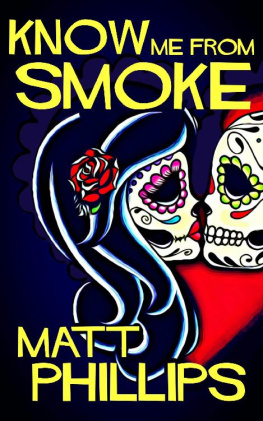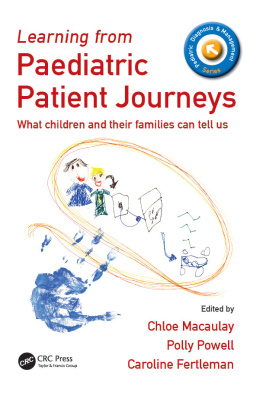Caroline Phillips - Waihou Journeys
Here you can read online Caroline Phillips - Waihou Journeys full text of the book (entire story) in english for free. Download pdf and epub, get meaning, cover and reviews about this ebook. year: 2000, publisher: Auckland University Press, genre: Romance novel. Description of the work, (preface) as well as reviews are available. Best literature library LitArk.com created for fans of good reading and offers a wide selection of genres:
Romance novel
Science fiction
Adventure
Detective
Science
History
Home and family
Prose
Art
Politics
Computer
Non-fiction
Religion
Business
Children
Humor
Choose a favorite category and find really read worthwhile books. Enjoy immersion in the world of imagination, feel the emotions of the characters or learn something new for yourself, make an fascinating discovery.

- Book:Waihou Journeys
- Author:
- Publisher:Auckland University Press
- Genre:
- Year:2000
- Rating:4 / 5
- Favourites:Add to favourites
- Your mark:
- 80
- 1
- 2
- 3
- 4
- 5
Waihou Journeys: summary, description and annotation
We offer to read an annotation, description, summary or preface (depends on what the author of the book "Waihou Journeys" wrote himself). If you haven't found the necessary information about the book — write in the comments, we will try to find it.
Waihou Journeys — read online for free the complete book (whole text) full work
Below is the text of the book, divided by pages. System saving the place of the last page read, allows you to conveniently read the book "Waihou Journeys" online for free, without having to search again every time where you left off. Put a bookmark, and you can go to the page where you finished reading at any time.
Font size:
Interval:
Bookmark:
Waihou Journeys
The Archaeology of 400 Years of Maori Settlement
CAROLINE PHILLIPS

First published 2000
Reprinted 2004
This ebook edition 2013
Auckland University Press
University of Auckland
Private Bag 92019
Auckland 1142
New Zealand
www.press.auckland.ac.nz
Caroline Phillips, 2000
eISBN 978 1 86940 688 2
The publishers gratefully acknowledge assistance from the Green Foundation for Polynesian Research.
This book is copyright. Apart from fair dealing for the purpose of private study, research, criticism or review, as permitted under the Copyright Act, no part may be reproduced by any process without prior permission of the publisher.
Nga puke ki Hauraki ka tarehua
E mihi ana ki te whenua
E tangi ana ki te tangata
Ko Moehau ki waho
Ko Te Aroha ki roto
Mai Matakana ki Matakana
Koinei te kupenga mai o Hauraki
Hauraki pepeha
The hills of Hauraki
Stand enshrouded by stars
I greet the land
I cry for the people
Moehau mountain to the coast
Te Aroha mountain inland
From Matakana to Matakana
This is the net of Hauraki
Hauraki saying
Cover: J. Merrett, Opita on the Thames 1848.
CHAPTER 1
CHAPTER 2
CHAPTER 3
CHAPTER 4
Coloured and black and white plates
CHAPTER 5
CHAPTER 6
CHAPTER 7
Waihou Journeys is a remarkable work. After many years of meticulous inquiry, Caroline Phillips has woven together diverse strands of evidence to create a compelling account of Mori life in the Waihou, from first arrival to the years after European settlement. The journals of European travellers, testimony in Land Court hearings, whakapapa and tribal histories, historical ecology, archaeological surveys, and the excavation of particular sites are brought together to give life to the ancestral landscapes of Waihou.
In consecutive chapters, different kinds of data are painstakingly cross-checked and yield their surprises. Site surveyors find large settlements built on arduously constructed shell mounds, which early Mori witnesses in the Land Court barely mentioned. Entangled and migratory patterns of resource rights are illuminated by the Mori concepts of ahi k, mana whenua, kinga tuturu, posing a sharp challenge to settlement models based on European assumptions of fixed territory and sedentary dwelling. Historical Mori and European records are used to re-inhabit the great p of Waihou, hitherto mainly known for their rich troves of Classical Maori artefacts combs, pendants, cloak pins, bird spears and musical instruments
In this book, the story of Waihou is traced from the time of the first voyaging ancestors. They came ashore, stayed for a while, roughed out adzes from the local basalt, and built new ocean-going canoes for further adventures. Eventually small groups settled down, populating the fertile river valleys, fishing at sea, eeling, and planting gardens of kumara, yam, gourd and taro. In 1600 or so the region was convulsed by an earthquake, and parts of the Hauraki Plains subsided. In response, the Waihou people raised many of their settlements up on shell mounds, and above ground storehouses and platforms were constructed. The subsequent dynamic history of population growth, battles, migrations, the rise of the ariki and the arrival of Europeans with new animals, plants, weapons and diseases is recounted, with further archaeological insights. The tale draws to a close as enemies armed with muskets rampaged through the region, driving the people away. When they returned to the Waihou almost a decade later, they were few and relatively poor. Their leaders began to trade energetically with the Pakeha, growing commercial crops and trying to protect their lands from further incursions.
The methods used in this work are innovative, intricate and fascinating. In the frontispiece, a saying from Hauraki is quoted Nga puke ki Hauraki ka tarehua, e mihi ana ki te whenua, e tangi ana ki te tangata; The hills of Hauraki stand enshrouded by stars; I greet the land, I cry for the people. By the sheer quality of her research and the way she has brought it together, Caroline Phillips has paid eloquent tribute to the ancestors of Waihou, and to those who helped her on her journey of discovery.
Dame Professor Anne Salmond
Waihou Journeys has been both a series of physical journeys and a journey of discovery.
In 1984, I took up the challenge of investigating two p sites on what is now the Ohinemuri River opposite the township of Paeroa. Raupa and Waiwhau were being threatened by the excavation of a floodway. Together with a team of 30 volunteers and a grant of $1000 from the New Zealand Historic Places Trust, which paid for a mechanical digger and accommodation, two weeks were spent in Paeroa examining the sites and their location.
In preparation for the excavation I met Shu Tukukino, Dick Rakena and Mate Royal, kaumtua of Ngati Tamatera, who supported the investigation. Because of a lack of local camping grounds, the team sensibly decided to stay at Te Pai o Hauraki marae where we were well looked after by kaitiaki Winnie Hutchinson. This was the beginning of an ongoing relationship with the tangata whenua of the Waihou.
Later, when preparing to write a report for the New Zealand Journal of Archaeology, I undertook some research into Maori Land Court Records. In these, I encountered Rihitoto Mataia who was, I was to find, one of the more eloquent witnesses in the Land Court.
In 1989, my first PhD project fell through and I looked around for something else. My supervisors, Roger Green and Harry Allen, suggested returning to the Waihou. Over the next four years, I organised a survey of the west bank, researched changing river courses and histories. I also devised a method of analysing the Maori Land Court evidence of Mataia, Tamati Paetai, Raika Whakarongotai, Haora Tareranui and many others. During this time I made many trips back to the Waihou: Roger and I excavated Waiwhau twice more, as Nigel Prickett excavated the neighbouring Raupa; I joined with Harry to excavate part of Opita, and with Harry and Simon Best at Orurangi. Later, in a three months TaskForce Green funded scheme, I and four rangatahi undertook further surveying on the east bank, excavations at Hurumoimoi and Pukehue, and investigations of other p sites. On all these occasions we stayed at Te Pai o Hauraki.
In 1994, I completed my PhD thesis, and the most significant moment was when I presented a copy to Te Pai o Hauraki marae.
In reading the Maori Land Court Records I was struck by the extreme mobility of the Waihou Mori. Although seasonal movements and shifts to p in times of stress had been long accepted in archaeology, what was presented in the Records and European accounts was something much greater. Mori land use encompassed a much greater flexibility than is accommodated in standard archaeological models, and the Mori concepts of ahi k and take enabled this process to happen. It was while thinking about this that I considered what the appropriate title for this book should be.
My last journey was the even harder task of representing the material as a book. When I undertook to rewrite the final chapter, being unhappy with how I had presented the data in the thesis, I rediscovered an article by Kent Flannery (given to me much earlier by Roger). By asking a series of questions of the data I had amassed, I found I could present possible causes for the actions and directions Mori had taken. This provided a better understanding of the interrelationship between the human and physical landscape and the developments that had occurred along the Waihou over four hundred years.
Next pageFont size:
Interval:
Bookmark:
Similar books «Waihou Journeys»
Look at similar books to Waihou Journeys. We have selected literature similar in name and meaning in the hope of providing readers with more options to find new, interesting, not yet read works.
Discussion, reviews of the book Waihou Journeys and just readers' own opinions. Leave your comments, write what you think about the work, its meaning or the main characters. Specify what exactly you liked and what you didn't like, and why you think so.


